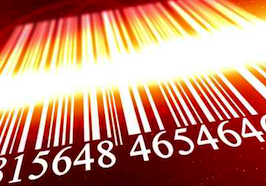 By Kelly Hodges
By Kelly Hodges
In 1883 the cash register was invented by a saloonkeeper in Dayton,Ohio. Technology has inarguably transformed that first crude model to the modern day version now found in every store, restaurant, and business around the world. Cash registers today are advanced computer systems, programmed to scan items, subtract discounts, calculate taxes, accept payment, and keep inventory all while quickly herding customers through the check-out aisles.
As advanced as these machines have become over time, they are far from infallible. Retailers keep an inventory of thousands of items, with prices changing sometimes daily, so it’s hard for even the most sophisticated program to keep up with all those numbers. And it’s pretty clear that they don’t. Last August the Department of Consumer Affairs in New York City blitzed close to 2000 supermarkets with inspections and found that 59% had violations that lead to consumer overcharges. Other cities have performed similar inspections all producing analogous results. The outcome is that consumers are being overcharged between $1 and $2.5 BILLION dollars each year due to scanning errors, which is no chump change!
The onus is on you as the consumer to ensure that the price you pay is the price advertised. Here are a few simple steps to make sure that you’re not getting overcharged at the register.
1. Know the price. It’s hard to know if you’re being overcharged if you have no idea what the price is suppose to be. Jot down the prices next to the items on your list grocery list. Snap a picture with your phone of the sale price on the clothing display. Whatever method works for you do it! Don’t believe me? Try it for one week and I can almost guarantee you’ll pick up at least one overcharge, I know I do!
2. Watch the scanner. If you can watch the screen as you check out you will know instantly if the item is ringing up correctly or not. Obviously this isn’t always possible as distractions (ie kids) sometimes prevent it, but if you can pay attention to the scanner it’s the easiest and quickest way to catch and correct the problem.
3. Check the receipt before you leave the store. Take 1 minute after you checkout and before you leave the store to glance over the receipt and make sure everything is in order. Are all the prices correct? Were additional discounts or coupons factored in? If not then you can rectify the situation right then and there and get your money back. If you wait until you get home to do this, it would have to be a pretty big overcharge to justify going all the way back to the store for a refund.
4. Speak up. Don’t be afraid to speak up when you notice an overcharge. No you are not being annoying, you are just looking to make sure you are being charged accurately. If the person you are speaking with is unable to help you, then ask for the store manager. They are usually more than happy to refund any errors. Obviously do this in a polite and non-confrontational manner, and you should have no problems.
5. Know your store’s overcharge policy. Some retailers will take it a step further then just refunding you the amount you were overcharged. Retailers may offer you double the overcharged amount, or even give you the item for free. Again, you must know the policy and ask for the correct reimbursement, because the store will not likely be forthcoming with this information. I shopped at my local grocery store for YEARS before I found out that their policy was to return double the overcharged amount.
Don’t forget to check your receipts and get back your piece of the billion dollar overcharge pie.
—————————————————————-
Any opinions expressed herein are solely those of the author, and do not in any way represent the views or opinions of her employer or any other person or entity.
Follow us on Twitter @seeitmarket and be sure to “Like” See It Market on Facebook to keep up with current news and updates on the site.








